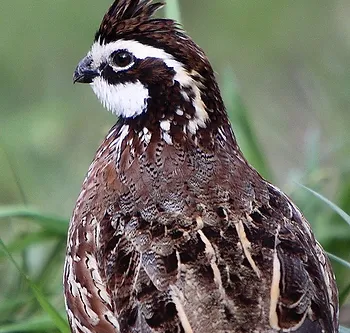
Bob says: ‘Preservation isn’t just for buildings—
it’s for landscapes, traditions, and quail habitats too!’
Meet Bob, Your Guide to Tallahassee’s History!
This bobwhite quail isn’t just our mascot.
He’s a symbol of how preservation protects the stories of our land, wildlife, and people.
The History Behind Our Mascot
Why the Northern Bobwhite Quail?
-
Native Symbol: The bobwhite quail (Colinus virginianus) has thrived in the Red Hills region for centuries, making it a natural emblem for Tallahassee’s heritage.
-
Gilded Age Legacy: In the late 1800s, industrialists like the Rockefellers and Hannas established quail-hunting plantations near Tallahassee, blending Northern wealth with Southern ecology.
-
Stoddard’s Revolution:
-
In 1924, plantation owners hired biologist Herbert Stoddard, whose research revolutionized land management.
-
His prescribed burning techniques restored longleaf pine forests—creating a model for balancing human use and conservation.
-
-
Cultural Impact:
-
Quail hunting shaped local traditions, from mule-drawn wagons to pointer dog training.
-
The region’s "plantation belt" (Tallahassee to Thomasville, GA) became a living laboratory for sustainable forestry.
-
-
Architectural Link: Many plantation estates feature vernacular "quail camp" structures—simple wood-frame buildings now prized as historic landmarks.
The Northern Bobwhite Quail isn’t just a beloved local bird. It’s a perfect symbol of Tallahassee’s interconnected heritage. Just as the Red Hills’ quail habitats thrive through careful stewardship, our historic buildings and neighborhoods depend on active preservation to endure. The bobwhite’s story mirrors our mission: from the sustainable land practices of early 20th-century plantations (which shaped both ecology and architecture) to the community’s ongoing efforts to protect shared history. Like a covey of quail safeguarding its territory, the Trust works to defend Tallahassee’s cultural landscape, one building, one story, and one neighborhood at a time. Bob reminds us that preservation isn’t just about the past; it’s about nurturing living history for future generations.